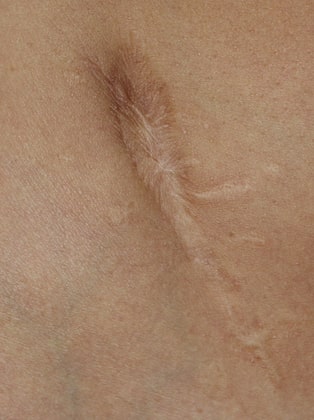
If a person is experiencing stubborn and hard to remove fat on the body, they can often turn to liposuction to remove unwanted fat deposits. Liposuction is when small incisions are created in the body so a device known as a cannula can be inserted into the incisions in order to break apart and remove the fat. Since the incisions are made in the skin of the body, there is a chance that some of the incisions can leave behind a visible scar. In this article, Cosmetic Town News will explore why scarring occurs as well as ways to treat any scarring after liposuction is performed.
 Any amount of scarring after liposuction surgery is often not significant since a board-certified plastic surgeon is trained in how to minimize scarring during and after the procedure. The surgeon will often make the incisions as small as possible and also create them on the body in an area where they are not very noticeable. If a large amount of scarring does happen, it might be the result of poor incision placement during surgery.
Any amount of scarring after liposuction surgery is often not significant since a board-certified plastic surgeon is trained in how to minimize scarring during and after the procedure. The surgeon will often make the incisions as small as possible and also create them on the body in an area where they are not very noticeable. If a large amount of scarring does happen, it might be the result of poor incision placement during surgery.
There is a chance of the development of keloid scars which can occur due to an excessive growth of normal tissue. In addition, hyperpigmentation (which is when patches of skin become darker on the body than the surrounding skin) can cause an incision to have a more prominent look on the skin after it heals.
There are multiple treatment options that can help to reduce the appearance of scars. While none of these treatments are able to completely remove scars, they can reduce their appearance. Here is a quick rundown of some of the most popular treatment options:
Patients who are worried about possible scarring from traditional liposuction can ask their doctor about less invasive treatment options that contain a lower risk of scarring. These less invasive options are sometimes referred to as “noninvasive body contouring.” Patients need to remember that a less invasive option might provide similar final results, but they do not deliver the same dramatic results as liposuction. Some of these popular traditional liposuction alternatives include CoolSculpting and laser liposuction (ultrasound therapy).
No matter the final treatment choice of the patient, it is best to start the liposuction process by scheduling a consultation appointment with a board-certified surgeon who is experienced in performing liposuction and placing the incisions in a manner where the chances of scarring are reduced. The doctor will examine the body of the patient and learn more about any past patient scarring and any family history of scars. The doctor should be able to share a realistic idea of how likely the patient is to experience scars after the surgery.
The doctor can also make sure the person is an ideal candidate for liposuction surgery and let them know the type of results they can expect to see after the procedure. Once the doctor and the patient are in agreement about the best treatment option, the steps can begin to eliminate stubborn fat on the body while also working to make sure to lessen the chances of scars appearing after liposuction or another treatment.
- MA